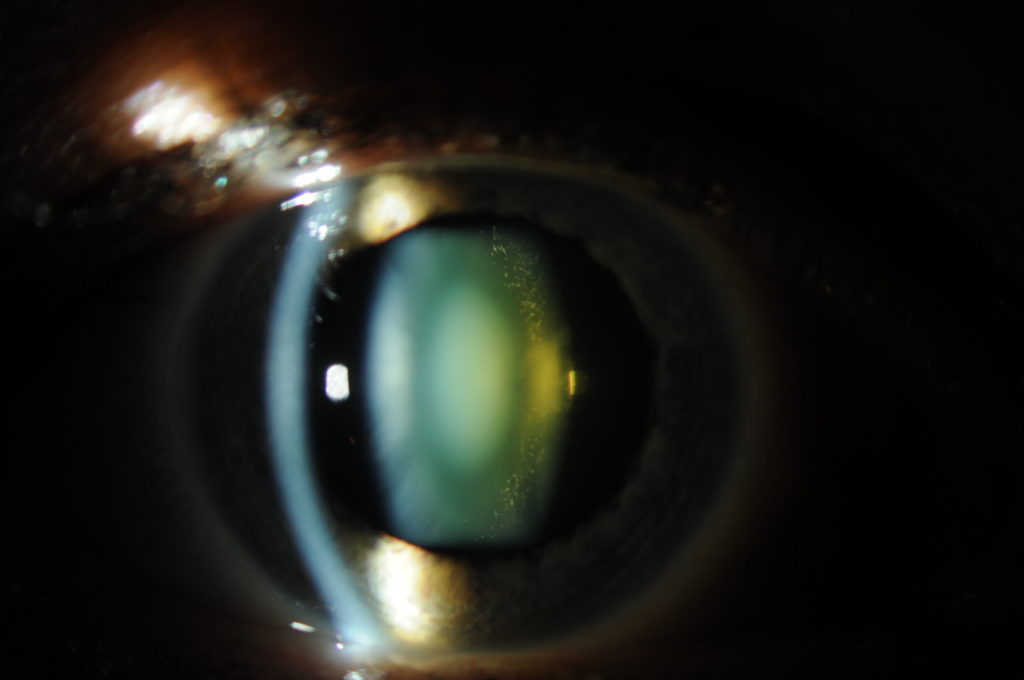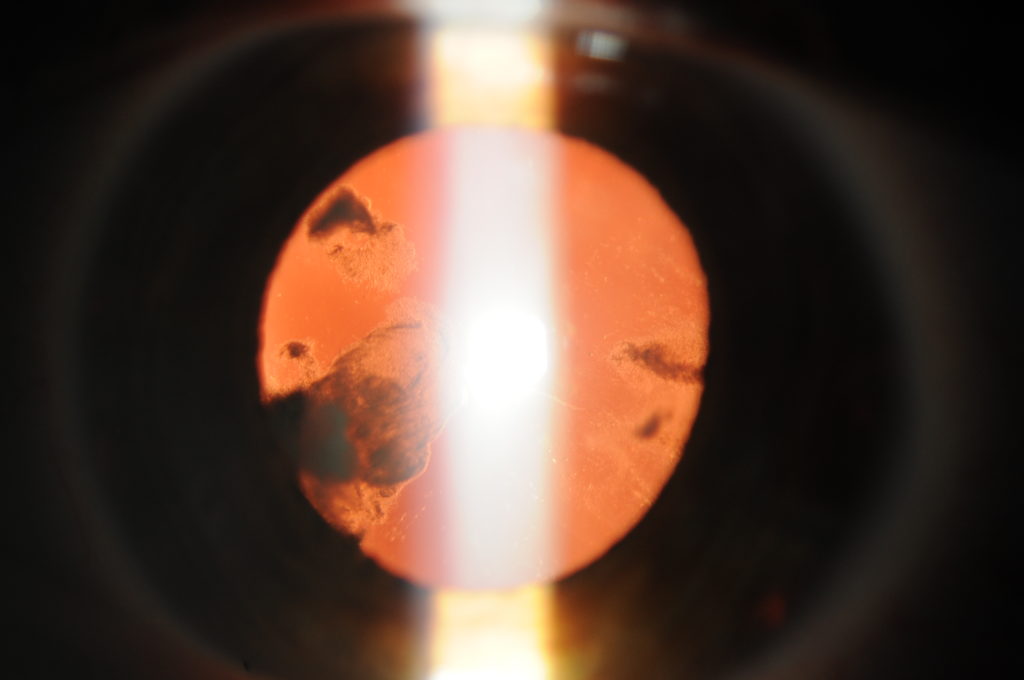Cataracts are the inevitable result of the ageing process affecting the lens inside your eye. Generally, when we reach our mid to late-forties, we recognize this ageing process as an increasing need for reading glasses. This process is called presbyopia and represents a hardening of the lens which prevents the lens altering its shape to bring near objects into focus.
As the lens continues to age it can become discoloured and/or develops opacities within it which cause the vision to become blurred. Frequently these changes also result in increasing glare or even multiple images (polyopia). When these lens changes impact on the quality of vision or produce other symptoms, they are referred to as Cataract.


Cataract will limit the improvement in vision that can be provided by glasses or contact lenses. Once cataracts start to form, laser vision correction is no longer appropriate and cataract surgery is generally recommended. However, by undergoing cataract surgery (which involves removing your natural lens and replacing it with an artificial intraocular lens (IOL) we can also frequently reduce or eliminate the need for glasses for distance. Reading glasses are often still required following cataract surgery unless some myopia is targeted in the non-dominant eye (monovision) or a multifocal intraocular lens is implanted. Neither of these strategies will restore the vision you enjoyed in your 20’s but frequently patients are able to manage most tasks of daily living without reliance on glasses or contact lenses. There are limitations of these strategies that need to be understood and your surgeon will discuss these options with you at your consultation.
